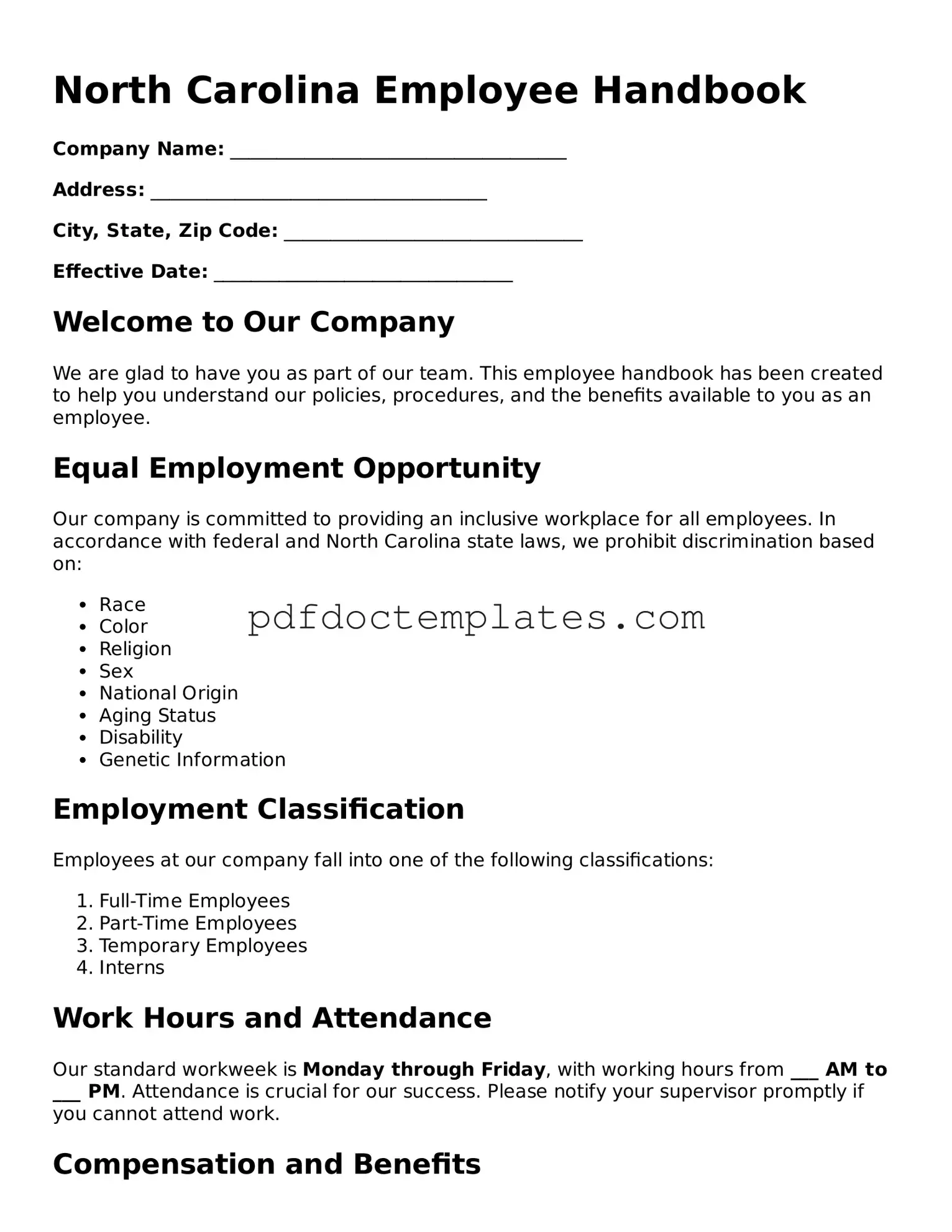North Carolina Employee Handbook
Company Name: ____________________________________
Address: ____________________________________
City, State, Zip Code: ________________________________
Effective Date: ________________________________
Welcome to Our Company
We are glad to have you as part of our team. This employee handbook has been created to help you understand our policies, procedures, and the benefits available to you as an employee.
Equal Employment Opportunity
Our company is committed to providing an inclusive workplace for all employees. In accordance with federal and North Carolina state laws, we prohibit discrimination based on:
- Race
- Color
- Religion
- Sex
- National Origin
- Aging Status
- Disability
- Genetic Information
Employment Classification
Employees at our company fall into one of the following classifications:
- Full-Time Employees
- Part-Time Employees
- Temporary Employees
- Interns
Work Hours and Attendance
Our standard workweek is Monday through Friday, with working hours from ___ AM to ___ PM. Attendance is crucial for our success. Please notify your supervisor promptly if you cannot attend work.
Compensation and Benefits
Employees receive competitive compensation. Additionally, we offer a range of benefits that include:
- Health Insurance
- Retirement Plans
- Paid Time Off
- Employee Assistance Programs
Safety Policy
Your health and safety are of utmost importance. We comply with the Occupational Safety and Health Administration (OSHA) regulations. Report any unsafe conditions to your supervisor immediately.
Code of Conduct
All employees are expected to behave professionally and ethically. This includes respecting coworker rights and following company policies. Violations may lead to disciplinary actions.
Confidentiality Policy
Employees shall maintain strict confidentiality regarding proprietary information and sensitive data. This requirement will continue even after employment ends.
Employee Acknowledgment
Please sign below to acknowledge that you have read and understood the policies outlined in this handbook.
Employee Signature: ____________________________________
Date: ____________________________________
